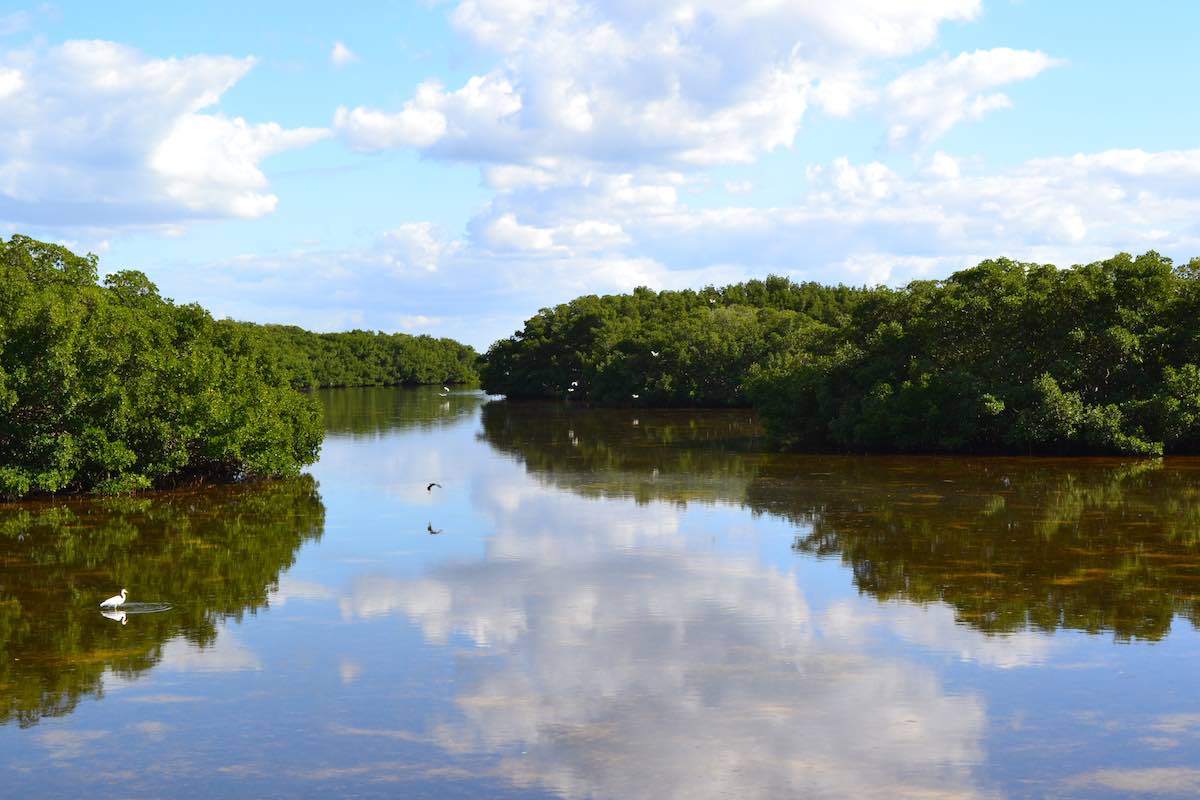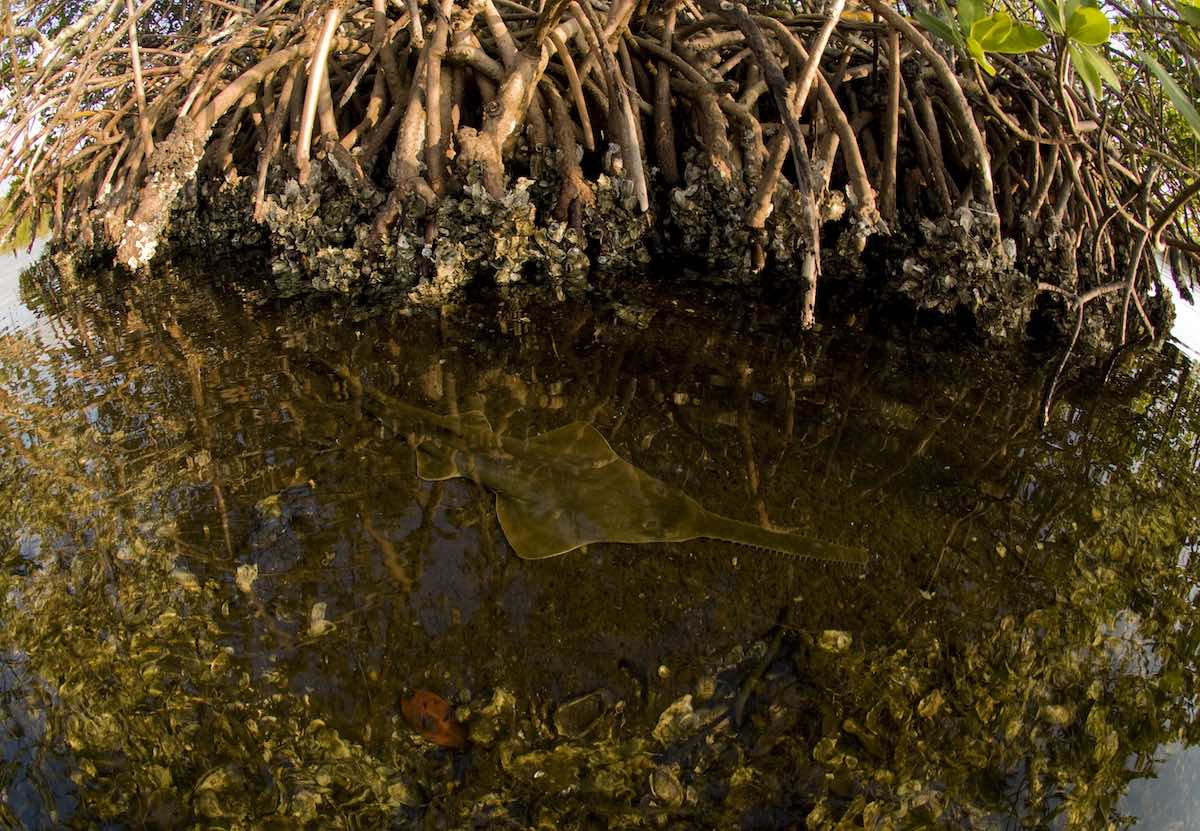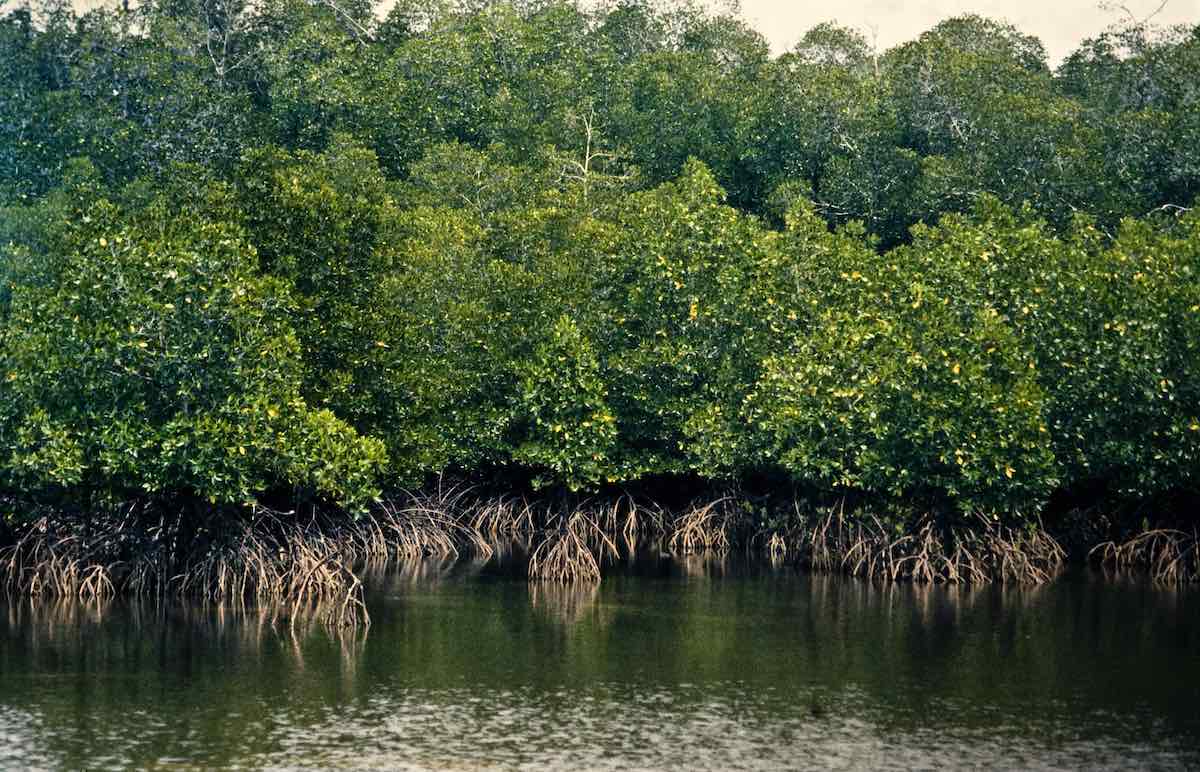Everything You Need to Know About Mangroves
Published by Ocean Conservancy
Have you ever been to a tropical ocean and seen trees growing along the shoreline with their roots stretching into the mud? You probably saw mangroves, which are a distinctive and critically important part of tropical coastal ecosystems. These trees may not look like anything special, but they have unique adaptations that allow them to live in saltwater environments, and provide crucial habitat for many marine species.
Brush up on your mangrove facts below, and see how you can help protect their habitat!


What are mangroves?
A mangrove is a type of coastal tree that can live in harsh saltwater environments. When there are many mangroves living together, it’s called a mangrove forest. Florida alone has 469,000 acres of mangrove forest, making it a staple ecosystem of coastal zones.
There are about 80 species of mangroves that are found in tropical and subtropical regions around the world, with the highest number of species found in the South Pacific region. Mangroves don’t like cooler temperatures, so you will rarely find mangroves beyond about 25 degrees latitude north or south, however warming temperatures due to climate change could cause their range to expand northward.
Life along the shore can be rough for a plant, and mangroves have special adaptations that allow them to live in sediment with high salinity and low oxygen. Some mangrove species have tall, arching roots that allow the plant to absorb oxygen through its bark. Others have pneumatophores, or snorkel-like structures that stick out of the mud and allow the mangrove to breathe.
Mangroves also need to balance their salt—just like humans, consuming too much salt and not enough water can hurt or kill the organism. To deal with salty seawater, some species have special pores that block the salt from entering, while others secrete the salt out of their leaves.


Why are mangroves important?
Mangroves provide countless ecosystem services, including supporting fisheries, providing storm protection and more. Worldwide, mangroves contribute about $1.6 billion each year to local economies.
Mangroves’ dense root systems provide perfect hiding places for small animals, and they serve as nursery habitat for many fish, shellfish and crustaceans. Some very commercially- and recreationally-important fish species rely on mangrove habitats for protection, including sheepshead, tarpon and red drum. Other animals live directly on the roots, including snails, barnacles and oysters.
Mangroves’ strong roots help prevent erosion by trapping sediment in their tangled roots. They also become incredibly important during storms: their roots can help break up wave energy and decrease storm surge. According to a recent report, every 330 feet of mangrove forest can reduce wave height by up to 66%. Lastly, they are an important part in the fight against climate change: worldwide, mangroves can sequester, or store, more than 28 million tons of carbon every year. One acre of mangrove alone can sequester 1,450 pounds of carbon a year, which is the amount of carbon produce by driving your car across the United States three times!


Why are mangroves in trouble?
Mangroves like to live on tropical coastlines—and so do people. Unfortunately, that means many mangrove forests are dozed to make way for coastal development, sandy beaches and aquaculture (in particular, shrimp farming has led to large mangrove losses). In Florida, Tampa Bay has lost 44% of its mangroves and marshes over the last 100 years. Since just the 1980s, global mangrove area has declined by 20%.
Fortunately, awareness around the importance of mangroves is spreading and there are efforts worldwide to restore mangrove habitats. You can help by supporting groups who work to protect and restore mangrove habitats, and eating sustainably-caught seafood. Also, you can join us in our work to help protect Florida’s ocean ecosystems, including mangrove habitats.
Learn more about our Florida program here.
Sign up for our emails!
The post Everything You Need to Know About Mangroves appeared first on Ocean Conservancy.
Read the full article at: https://oceanconservancy.org/blog/2019/11/13/everything-need-know-mangroves/


